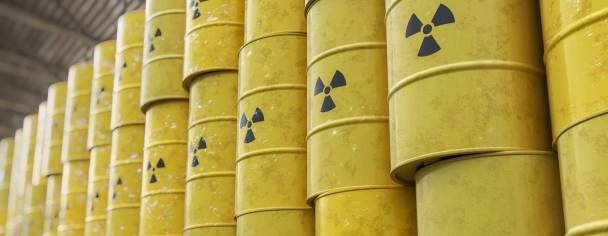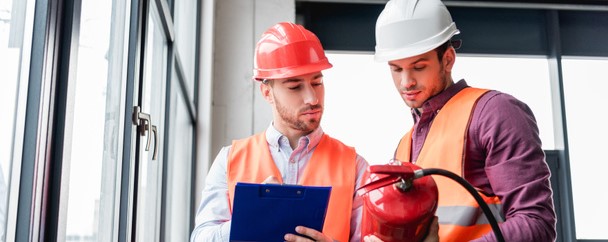Class 7 dangerous goods include radioactive materials, which form one category among the 9 classes. Following is a comprehensive summary of radioactive materials, their characteristics, regulatory bodies overseeing their transportation in Australia, and the safety requirements.
What are Radioactive Materials?
Radioactive materials are substances that release a type of energy called ionising radiation. There are three types of radiation that can be emitted: alpha particles, beta particles, and gamma rays. Imagine these particles and rays as tiny invisible “bullets” or “waves” that are released from the radioactive material. They can travel through the air or even penetrate through solid objects.
If living organisms (including humans) are exposed to significant amounts of this radiation over a prolonged period, it can lead to severe health consequences such as:
• Acute radiation syndrome (ARS)
• Increased risk of cancer
• Genetic damage
• Long-term health effects
• Skin burns and tissue damage
• Suppressed immune system

Examples of Radioactive Materials
There are several common examples of radioactive materials, such as uranium, plutonium, caesium, and cobalt-60. These materials have unique properties that make them useful in various industries. For example, in nuclear power generation, uranium and plutonium are used to produce energy in a process called nuclear fission. In the field of medicine, radioactive materials like caesium and cobalt-60 are used for diagnostic imaging and cancer treatments. Additionally, they have important applications in scientific research and various industrial processes.
Regulations for Transporting Radioactive Material
In Australia, the transportation of radioactive materials is governed by several regulatory bodies to ensure the safety of both the general public and those involved in the transport process. Below are two of the main radioactive materials regulations.
The Australian Dangerous Goods Code
The primary regulatory authority responsible for overseeing the transport of dangerous goods is the Australian Dangerous Goods Code (ADG Code). This comprehensive set of guidelines outlines the specific requirements and regulations that must be followed during the transportation of radioactive material. It does not, however, go over the transportation of radioactive materials alone. Currently the Code only sets out requirements and guidelines relating to the transport of explosives and radioactive materials where these goods are transported together with other dangerous goods, or where the dangerous goods have a subsidiary hazard of another class.
The Australian Radiation Protection and Nuclear Safety Agency
The Australian Radiation Protection and Nuclear Safety Agency (ARPANSA) plays a vital role in regulating the handling and transportation of radioactive materials. ARPANSA sets radiation protection standards, establishes safety guidelines, and monitors compliance with these regulations to protect public health and the environment. Requirements relating to the transport of radioactive substances are subject to state or territory acts and regulations and are based on the following Commonwealth publications:
Shipping Containers for Radioactive Material
The appropriate containers for transporting radioactive materials in Australia would depend on the type, activity, and physical form of the material being transported. However, the following are common types of containers used for transporting radioactive materials in Australia:
- Type A Containers: Type A containers are used for transporting low-level radioactive materials with relatively low levels of radioactivity. These containers are designed to withstand normal transportation conditions and prevent the release of radioactive material under normal circumstances.
- Type B Containers: Type B containers are designed for transporting higher levels of radioactive materials, including materials with higher levels of radioactivity or materials that are more difficult to shield. These containers are built to withstand more severe accident conditions, such as impact, fire, and immersion in water.
- Type C Containers: Type C containers are used for transporting highly radioactive materials, such as spent nuclear fuel or high-level radioactive waste. They provide the highest level of containment and protection against accidents and incidents during transport.

Safety Requirements for Transporting Radioactive Material
Radioactive materials transportation demands a high level of precautionary measures to minimise the risks associated with radiation exposure. The following safety requirements are essential for the secure transportation of Class 7 dangerous goods:
Packaging and Labelling
Radioactive materials must be securely packaged in containers specifically designed to meet rigorous performance standards. These containers are classified into Type A, Type B, or Type C packages, each offering varying levels of protection depending on the characteristics and quantity of the radioactive material being transported. For example, iodine-131 would be securely packaged in a Type A container, while caesium-137 might be contained in a Type B container.
In addition to appropriate packaging, clear and visible labelling is mandatory. Transport vehicles carrying radioactive materials should display labels and placards that indicate the presence of radioactive substances. These labels serve as warning signs to alert emergency responders, transport personnel, and the general public about the potential hazards associated with the cargo.
Radiation Monitoring
Transport vehicles that carry radioactive substances are required to be equipped with radiation monitoring devices. These devices play a crucial role in continuously measuring and detecting any potential leakage of radiation during transportation.
One commonly used radiation monitoring device is the Geiger-Muller counter which is a handheld or portable instrument that can detect and measure ionising radiation. The Geiger-Muller counter works by detecting the electrical pulses generated when ionising radiation interacts with the gas-filled chamber of the device.
This helps provide real-time information about radiation levels in and around the transport vehicle. By continuously monitoring radiation levels, any abnormal or excessive radiation readings can be promptly detected. After being detected, appropriate measures can be taken, such as stopping the transportation, notifying relevant authorities, and implementing proper containment and decontamination procedures.
Training and Certification
Training and certification play a vital role in ensuring the safe handling and transport of radioactive materials by equipping workers with necessary knowledge and skills. Those involved in handling and transporting these materials must undergo specialised training programs which address the unique risks and challenges associated with radioactive substances.
During training, emphasis is placed on radiation safety practices to ensure that personnel are aware of the hazards and understand how to handle radioactive materials safely. This includes learning about ADG Code requirements, as well as best practices for preventing leaks or spills during transport.
Furthermore, radioactive materials transport training covers the use of personal protective equipment (PPE) to minimise the risk of radiation exposure. This includes using lead aprons to shield the torso and vital organs, protective gloves to prevent direct contact, respiratory masks to avoid inhaling radioactive particles, protective eyewear to safeguard the eyes, and radiation-resistant suits or coveralls for full-body protection.
Individuals involved in the transport of radioactive materials must also obtain relevant certifications to demonstrate competence. These certifications serve as evidence that they have completed the necessary training and have demonstrated their understanding of radiation safety protocols and procedures.
As a business owner or freight operator, it is vital that you train your employees according to legal and recommended standards in your jurisdiction.
Route Planning
The goal of route planning is to select routes that minimise the risk of accidents or incidents that could lead to the release of radioactive materials and subsequent exposure to radiation. By taking into account factors such as road conditions, traffic patterns, time of day, and proximity to emergency response resources, transport operators can improve the safety of the transportation process.
Security
The radioactive materials themselves can be attractive targets for theft or unauthorised access due to their potential misuse or value. Transport operators should implement strict security measures to protect the shipments throughout the transportation process. These may include physical security measures such as tamper-evident seals, specialised containers with locking mechanisms, and vehicle tracking systems.
The implementation of robust security measures not only helps prevent unauthorised access or theft but also serves to maintain public confidence that the freight industry will handle radioactive materials responsibly.

A small radioactive capsule fell off a truck in Western Australia in January. Image Courtesy: BBC
Lost Radioactive Capsule in Australia – A Lesson Learned
In January 2023, a small yet highly radioactive capsule was reported missing in Western Australia. Following a thorough and concentrated week-long search along a 1400km stretch of highway in the Australian outback, the authorities successfully located it. Measuring only 6mm in diameter and 8mm long, the capsule, believed to have fallen off a truck from a mining company, was discovered near the town of Newman in Western Australia. The capsule contained Caesium-137 and was emitting potentially fatal amounts of radiation.
Cs-137 capsules are frequently utilised in mining radiation gauges to gauge material density. However, direct contact with such capsules can result in significant burns and expose individuals to radiation levels equivalent to 10 x-rays per hour. The Department of Fire and Emergency Services successfully controlled and contained the capsule, ensuring its safe transportation to a secure facility in Perth. Investigations were commenced to determine how the incident occurred.
This incident has emphasised the need for strict safety protocols when dealing with radioactive materials. It reminds everyone, including transport companies and authorities, of the importance of following proper procedures to ensure the safe handling, containment, and transportation of radioactive materials.
Need to Transport Class 7 Dangerous Goods in Australia?
Looking for a radioactive materials freight quote? There are strict limitations and guidelines to what, and how much of a dangerous material can be transported by a carrier, so be sure to declare the Dangerous Goods when requesting a quote online. Freight Quote Australia is able to arrange transport of most Dangerous Goods, however, we will require the UN number, Class, Packing Group, and Weight of the goods in order to quote and organise the transport of your freight.
This information is general in nature and we accept no responsibility for consequences arising from the use or reliance on this article. If you need assistance transporting radioactive materials, please feel free to submit a Quote Request.

